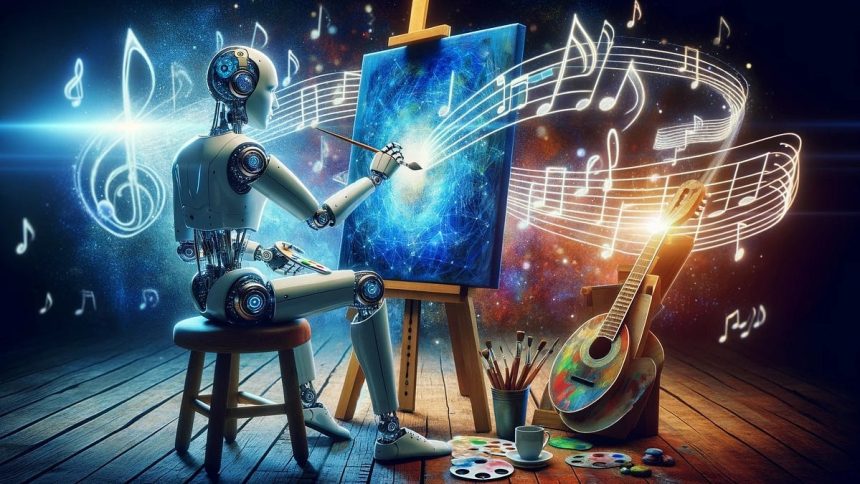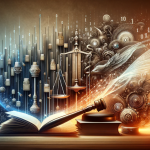The creative industries, encompassing fields like graphic design, film production, advertising, and digital content creation, have always thrived on innovation. Today, one of the most transformative innovations shaping these industries is artificial intelligence (AI). Among the various applications of AI, image generation stands out for its profound impact on how creatives work, collaborate, and deliver results. This technology is not only changing workflows but also redefining artistic boundaries, sparking debates about originality, authenticity, and the future of human creativity.
The Evolution of AI in Creative Spaces
AI’s journey into the creative sector began modestly, with basic tools for editing and design assistance. Over time, advancements in machine learning and neural networks led to the development of sophisticated AI systems capable of producing high-quality images that mimic or even surpass human-made artwork. These systems analyze vast datasets of visual information, learning patterns, styles, and techniques to create entirely new pieces of art, design, or illustrations.
The introduction of AI image generator tools has democratized creativity, providing individuals and businesses with easy access to professional-grade visuals. Whether it’s crafting a logo, designing a virtual environment, or generating concept art, these tools have streamlined processes that once required significant time and specialized skills.
Advantages of AI Image Generation
The advantages of AI-generated images are manifold, making them an indispensable resource for modern creatives.
1. Efficiency and Speed
In industries where deadlines are tight, the ability of AI to produce images in seconds is a game-changer. A process that once required days of brainstorming and manual design can now be completed in moments, allowing creatives to focus more on strategic and conceptual work.
2. Cost-Effective Solutions
For startups, small businesses, and independent artists, hiring skilled designers or purchasing exclusive artwork can be costly. AI tools provide an affordable alternative without compromising quality.
3. Customization and Versatility
AI systems can generate visuals tailored to specific needs, whether for marketing campaigns, storyboarding, or game design. By tweaking parameters, users can create images that align perfectly with their vision.
4. Accessibility for Non-Experts
Previously, creative industries were dominated by those with specialized training or access to expensive resources. Today, anyone with an internet connection can harness the power of AI, leveling the playing field for aspiring artists and entrepreneurs.
Challenges and Ethical Considerations
While AI image generation offers undeniable benefits, it also raises significant challenges and ethical concerns.
1. Copyright and Ownership
One of the most contentious issues is the question of ownership. When AI generates an image based on a dataset, does the credit go to the AI, the programmer, or the person who commissioned the image? Furthermore, datasets often contain copyrighted works, leading to potential legal disputes.
2. Impact on Employment
As AI takes over repetitive or time-intensive tasks, there is growing concern about job displacement. Many fear that roles traditionally filled by illustrators, graphic designers, and animators may diminish, though others argue that AI will create new opportunities requiring human oversight and creativity.
3. Loss of Authenticity
Art has always been valued for its human touch—the imperfections, emotions, and stories embedded within. Critics argue that AI-generated content lacks this depth, making it less meaningful than traditional creations.
4. Bias in Datasets
AI systems are only as good as the data they are trained on. If datasets reflect cultural or gender biases, the generated images may unintentionally perpetuate stereotypes, highlighting the need for careful curation of training material.
Transforming the Role of the Content Creator
For professionals working as a content creator, AI image generation is both a boon and a challenge. It offers tools to enhance creativity, allowing creators to experiment with concepts and ideas they might not have explored otherwise. At the same time, it demands a shift in skills, focusing more on guiding AI systems rather than creating from scratch.
This transformation emphasizes adaptability, encouraging creators to embrace AI as a collaborator rather than a competitor. For instance, a creator might use AI to draft initial concepts, which can then be refined and personalized to meet specific goals. This hybrid approach ensures that the final output retains a human touch while benefiting from the efficiency and innovation of AI.
Redefining Collaboration in Creative Projects
AI image generation is also reshaping how creative teams collaborate. In the past, multiple departments might need to coordinate over weeks or months to complete a project. Today, AI can bridge gaps between teams, providing a common platform for ideation and execution.
For example, an advertising team can use AI tools to visualize campaign ideas in real time, enabling immediate feedback and revisions. Similarly, filmmakers can generate realistic concept art or storyboards without needing to hire additional artists, speeding up pre-production phases.
The Future of AI Image Generation
As AI continues to evolve, its integration into creative industries will likely deepen. Emerging technologies like generative adversarial networks (GANs) are already pushing the boundaries of what AI can achieve, creating hyper-realistic images indistinguishable from photographs.
Moreover, as AI becomes more accessible, we can expect to see a rise in collaborative platforms where humans and AI work together seamlessly. These platforms could revolutionize education in creative fields, equipping the next generation of artists with AI literacy from the outset.
However, the future will also depend on how industries address the challenges posed by AI. Regulations surrounding copyright, transparency in data usage, and ethical AI development will play a crucial role in ensuring that technology serves as an enabler rather than a disruptor.
Balancing Innovation with Tradition
While AI image generation holds immense potential, it’s essential to remember that technology is a tool, not a replacement for human creativity. The most impactful works will likely arise from a balance between AI innovation and traditional artistic methods.
Creative professionals must focus on leveraging AI to enhance their unique skills, using it to amplify their vision rather than replace it. By doing so, they can continue to push the boundaries of their fields, ensuring that the human spirit remains at the heart of art and design.
Conclusion
AI image generation is undeniably revolutionizing creative industries, offering unprecedented opportunities for efficiency, innovation, and accessibility. While challenges persist, the key lies in embracing AI as a complement to human creativity, fostering a future where technology and tradition coexist harmoniously. By navigating this evolving landscape with an open mind and a commitment to ethical practices, creative professionals can unlock the full potential of AI, shaping industries that are as imaginative and diverse as the people they serve.
Lynn Martelli is an editor at Readability. She received her MFA in Creative Writing from Antioch University and has worked as an editor for over 10 years. Lynn has edited a wide variety of books, including fiction, non-fiction, memoirs, and more. In her free time, Lynn enjoys reading, writing, and spending time with her family and friends.















